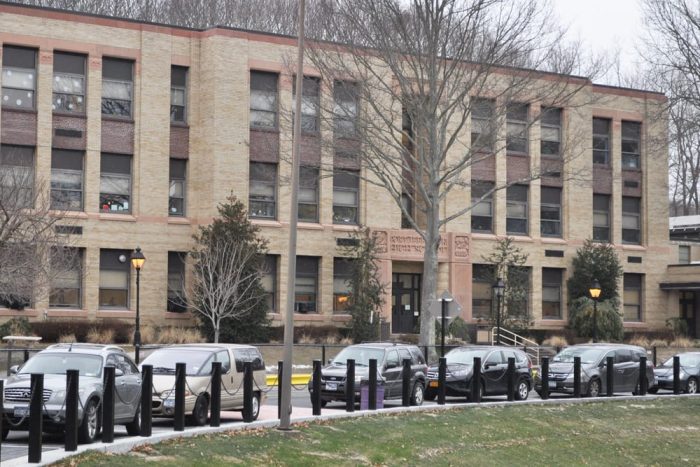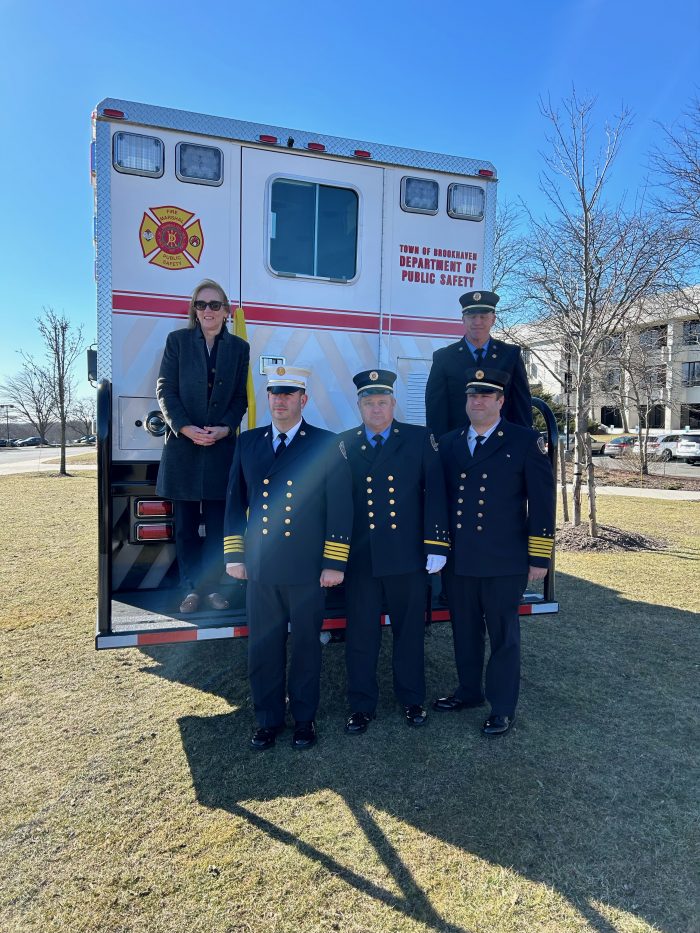By Samantha Rutt
A recent Port Jefferson Civic Association meeting held at the Port Jefferson Library saw a significant turnout of residents, both familiar faces and newcomers, gathering to discuss the future of the Port Jefferson School District. The March 11 meeting, which drew a diverse crowd, sparked a heated debate regarding the declining enrollment within the district and how best to address this pressing issue.
On one side of the debate were residents, led by a presentation from Gail Sternberg, advocating for measures such as closing the school district altogether or offering tuition options for students to attend neighboring districts. During her presentation, Sternberg cited documents she allegedly received from a Freedom of Information Act application from the school district regarding its projected enrollment numbers.
Conversely, another group of residents passionately argued for investing in the school district in hopes of revitalizing it and attracting more families to the area. They proposed initiatives aimed at enhancing the district’s offerings, improving facilities and implementing strategies to promote the district to potential residents.
“By not investing money in the schools, we are making a self-fulfilling prophecy for people not to want to come here,” a concerned Port Jefferson parent of two said. “My son has three new students in his grade in the past two or three weeks. My daughter who is in kindergarten, also has had new students in the classroom. So, if we do not invest in the school, people are not going to want to come here.”
In addition to raising questions about dwindling enrollment, questions were asked throughout the meeting regarding other budgetary concerns. Residents argued that cutting losses and consolidating resources would be the most financially responsible course of action, whereas others advocated for investing in the enhancements for the struggling district.
Sternberg urged for a public forum to address the financial expenditures from the district, making note of the areas unaffordability and conversations that have allegedly begun to address a consolidation plan.
“If our school taxes are so high that young families can’t afford to live in Port Jefferson, we’ll just be shooting ourselves in the foot,” Sternberg said. “The declining enrollment situation has already created public discussions with the Three Village and Mount Sinai school districts and their respective constituents. We need to have the same public forum to openly discuss our challenges and options. And we must be proactive.”
The civic association’s high school liaison, Drew Sora, suggested investment is the key to a more prosperous future.
“Improving our schools is the key to drawing new students,” Sora said. “You can read the comments on Facebook, or listen at the school board meetings to hear not just those in opposition of some of the things coming from the school, but from the parents of young children who are afraid and tired of this new kind of fear, which is the fear that their young children or their children’s younger siblings will not get to grow up in the same school that they do, and that they’ll have to cart them off to Comsewogue or Three Village or Mount Sinai, which will inevitably raise our taxes because of our extremely low tax rate in our district.”
Sora continued explaining to the association how he has seen finances be directly allocated to programs within the high school.
“The expenditures that some call questionable would have prevented my chorus class from having to rehearse in the back of an auditorium instead of a classroom, from having one of our band teachers lose his classroom to a different section of the auditorium,” Sora shared. “And you might have guessed it, but it’s hard to practice singing when the only thing separating the singing and the trumpets are a few curtains.”
As the conversation unfolded, tensions ran high, and accusations flew back and forth between opposing viewpoints. Some residents expressed frustration at the lack of civility, urging for a more productive and respectful dialogue.
“In the email that went out yesterday, it says, ‘Some of our fellow residents will be sharing their concerns regarding the school and its future’ — I feel given the weight of what we’re discussing, more information would have been helpful to help prepare for this discussion,” resident and former Democratic congressional candidate Kyle Hill said. “Even so we complained about all the FOIA issues. It would be nice if we just included those documents as attachments that go out so we can have a better-informed discussion going forward.”
Despite the heated exchanges, many residents voiced their commitment to finding common ground and working together to address the challenges facing the school district. Several attendees suggested forming a task force or committee to explore potential solutions and gather input from various stakeholders.
“I just have to say that I think it’s great that this whole room full of folks took the time to come out tonight and express these different opinions. This is obviously something that’s been bubbling up in our community about what we need to do about this and the facts that we need to know about it,” Deputy Mayor Rebecca Kassay said.
“As someone who was inspired to run for local office, I wanted to share that the petition filing case for running for the school board here is on April 22 — that election will be May 21,” Kassay explained. “So, if there’s anyone who’s motivated, and I know that we all have different jobs, different life responsibilities, so this is not for everyone, should anyone feel that they are so compelled to run for the school board, that option is there too.”
As the meeting concluded, residents left with a sense of urgency and determination to continue the conversation and explore viable options for the school district’s future.
The debate surrounding the fate of the district remains ongoing, highlighting the complexities and passionate viewpoints within the community regarding education and community development.
The next Port Jefferson Civic Association meeting will be held April 8.




 Herb Mones, Friends of the Greenway editor-in-chief and president of the Three Village Community Trust, wrote in an email that while there hasn’t been an official sale to either the MTA or to a solar farm firm, it is likely that these sales will happen and that a portion of the Greenway trail will have to be rerouted to accommodate a new rail yard.
Herb Mones, Friends of the Greenway editor-in-chief and president of the Three Village Community Trust, wrote in an email that while there hasn’t been an official sale to either the MTA or to a solar farm firm, it is likely that these sales will happen and that a portion of the Greenway trail will have to be rerouted to accommodate a new rail yard.













